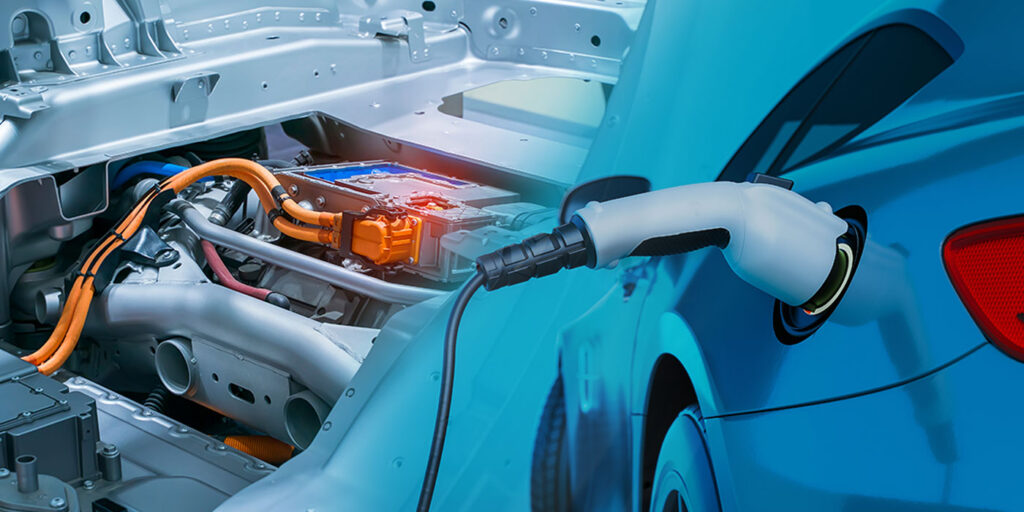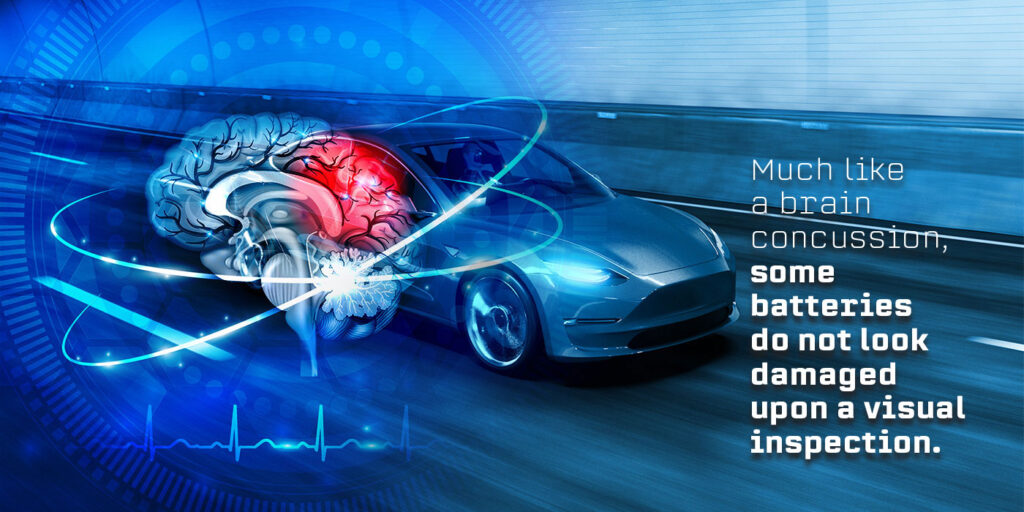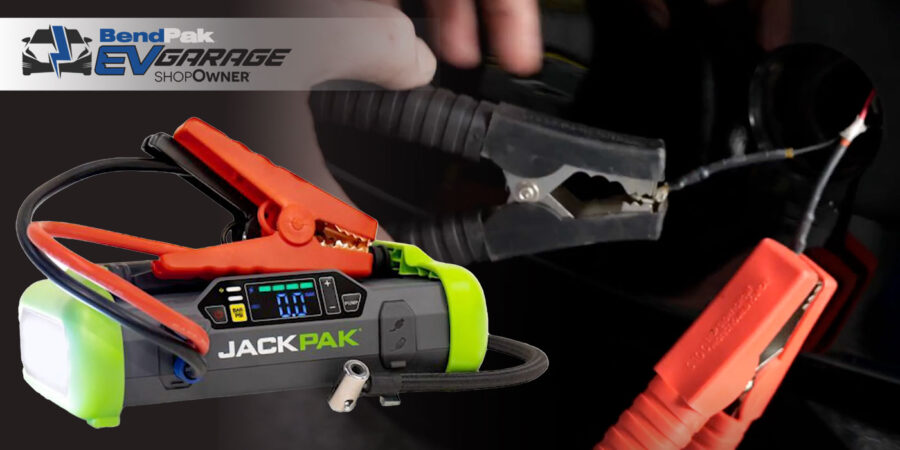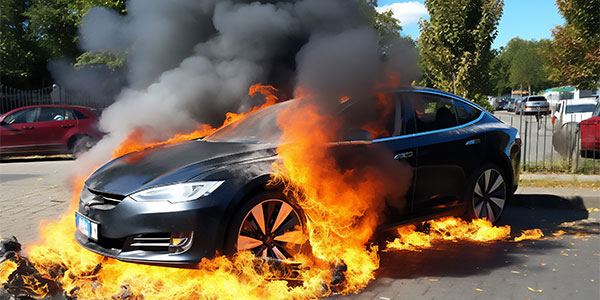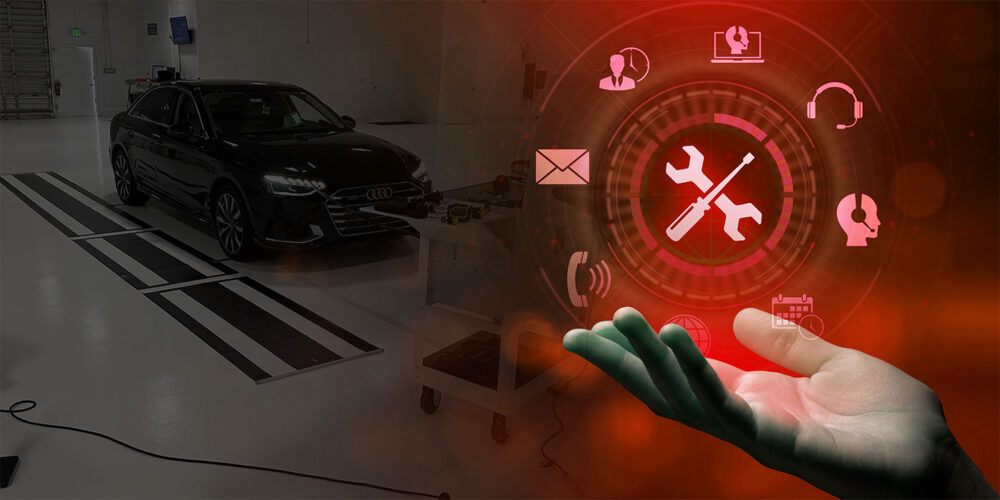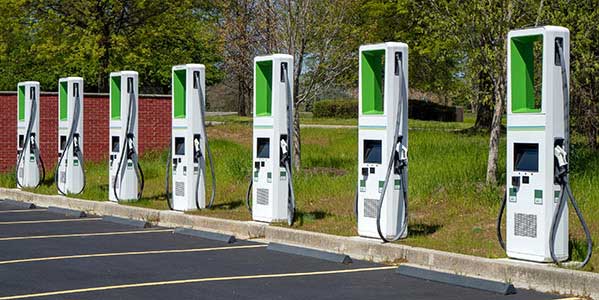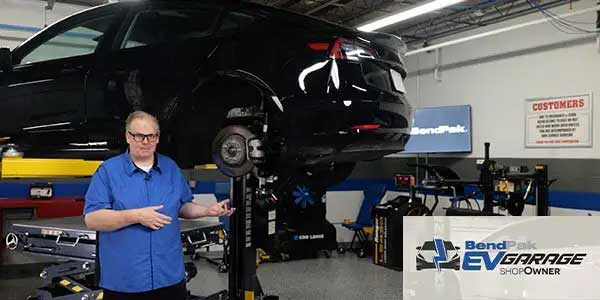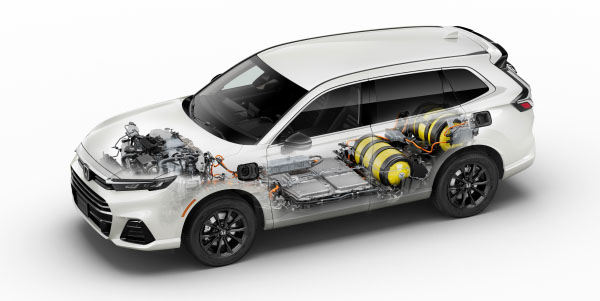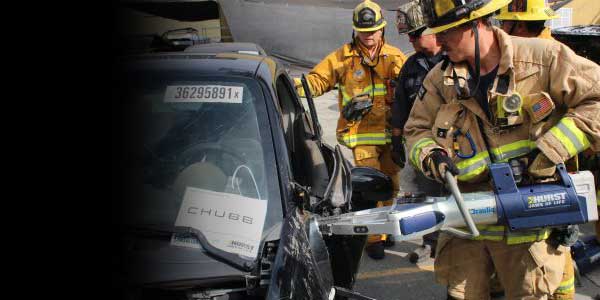When it comes to battery electric vehicle (BEV) and hybrid electric vehicle (HEV) repair safety, collision repair facility owners and operators cannot be over-prepared. After all, EV safety is truly a matter of life and death; electricity will take the path of least resistance — it will find and take all available routes, even if they’re unintended. If you give electricity the opportunity to flow through your body, it will! There is absolutely zero room for error, which is why EV safety preparedness begins well before a hybrid or EV vehicle rolls into your bay.
Outside the shop is just as important — including provisions to keep in mind before an EV is authorized for repair at your shop. Specifically:
- Designated room for repair: EV safety precautions are not solely limited to a shop’s interior; they must extend to your shop’s parking lot, with a special section allocated for BEV/HEV vehicles. That section needs a clear 16-foot radius surrounding it, roped off with proper EV safety/no trespassing signage. EV battery fires are unfortunately a reality, and you want to eliminate any possible “fuel to the fire” by providing a dedicated, exterior holding area.
- Live until verified: Operate under the assumption that any EV brought to your shop has a live charge until you’ve used proper diagnostic tools to verify. Once the vehicle has been moved off the flatbed/tow truck, use a two-pole voltage tester on multiple points on the chassis — especially the accident area — to determine there is no high-voltage charge present. Follow this by scanning the battery with a heat gun to identify any potential “hot spots,” indicating cell damage that could lead to a thermal event.
- Tagging: Use of a color-coded labeling system to clearly tag each EV serves to alert all staff members to the status of a vehicle before the battery has been officially disengaged. Green means all clear, yellow means active but current state unknown, and red means high voltage and/or battery cell damage detected.
- Interior space: Once an EV rolls inside, it’s important to commit a designated space within your shop where BEV/HEV vehicles are being repaired and access can be limited to those authorized to work in the space. Yellow and black tape and caution/danger signage are all important elements to reinforce the importance of this dedicated environment while ensuring that each and every staff member understands the seriousness of these life-and-death boundaries.
- Disconnect: Once inside the shop in the designated space, it’s critical to engage the vehicle’s parking brake to prohibit any tire rotation that could create a charge. Then, it can be put on the lift for further inspection and high-voltage system disconnecting procedure.
- Review the original equipment manufacturer’s (OEM) emergency response guide: Of course, following an OEM’s repair procedures is critical to performing a complete, safe and quality repair. Additionally, each BEV/HEV OEM has devised an emergency response guide (ERG) or “rescue sheet.” These free materials are available online from every manufacturer (as well as via I-CAR’s Repairability Technical Support (RTS) Portal) and provide a quick overview of passive and active safety systems, informing technicians of potential “danger zones” in repairing HV vehicles that have been involved in a collision. You can find an updated list here.
Battery “Concussions”
Once you’ve verified that a battery is disconnected/no charge, be mindful of “battery concussions.” Much like a brain concussion, some batteries do not look damaged upon visual inspection. Never assume the battery is okay — potential damage could be lurking underneath, as chemical reactions in batteries take time to develop.
The biggest risk is for a battery to be out of balance, meaning several battery cells are holding different voltage levels. Imbalanced cell values create internal resistance between the cells, resulting in increased internal temperatures — which could lead to a thermal event. It’s recommended to regularly check around the battery with a heat gun throughout the entire repair process to ensure a “healthy temperature.” Battery temperature for a non-operating system must be equal to the outside temperature. Battery temperature for an operating high-voltage system is temperature-controlled and should be around 70 to 75 degrees Fahrenheit.
Personal Protective Equipment
Wearing proper personal protective equipment (PPE)/safety equipment cannot be overstated; don’t be fooled into believing special PPE gloves aren’t needed. Every step in a HV shutdown and isolation procedure is in place, specifically as written in the service information, for a reason. Wearing PPE adds another level of protection in the event of an unseen or unknown danger or fault, including accidentally touching something that is energized. Additionally, if an incident does occur, PPE insulates technicians from potential shock, an arc welding flash or blast. Keep in mind that electricity does not produce a “taste” or smell, and you can’t see it unless it is arcing or sparking.
EV Safety Tool Box
The best and first EV tools? Observation, knowledge and assessment.
EVs share many similarities and operational principles, but they are not all the same. Take time to become familiar with the overall vehicle, from understanding the location of all of the HV systems and their parts to cables and how these elements are routed. Assess if any of these items are damaged.
It can’t be overstated enough that the inspection process starts when the customer drives the vehicle in or the flatbed drops it off in the lot outside. There are aspects of BEV/HEV repairs that are different from conventional petroleum-fueled vehicles. Thus, you should be aware of everything from the HV battery’s state of health to its cooling system and HV systems, in addition to all of the usual mechanical and body inspection points.
Scan tools, digital volt Ohm meters (DVOMs), dual-pole testers, milliohm meters and megaohm testers are just a sampling of the tools of the trade, with some very unique ones specific to certain brands and makes. Being familiar with the vehicle and its systems is one part of the equation; the other part is truly understanding the test equipment, its functionality and reliability. Take the time to establish confidence with the accuracy of results and notifications. This includes being able to achieve a “zero potential status/notification” in new equipment after performing a disconnection procedure to switch off the HV system. Be advised that a regular shop multimeter should not be used; too many errors can happen, including setting an incorrect measurement group. Using a two-pole voltage tester, you can only measure voltage, thus eliminating the potential for errors. Additionally, a milliohm meter should be used to measure the component bonding as well as an insulation tester to help ensure a safe environment.
It is highly recommended to install a wall-mount charging station/charging monitor, as it only requires a charger with an ICCB (in cable control box), which acts to supervise the charging mode. It’s critically important to always unplug the vehicle from a charger when somebody is working on the vehicle. The system is considered “live” when plugged in and charging. Working on a vehicle in this condition can be dangerous.
Training
Please be advised that there’s much more to consider when repairing BEV/HEV vehicles than what is outlined in this article. Rather, this article serves to get you thinking about the opportunities ahead in your professional career as vehicles continue to evolve and repairs become more surgical in every way. The choices you make not only impact your safety and livelihood but also have possible repercussions to the lives of the families that drive and perhaps test your work on the roads of America. Your investment in training is an investment in your future, so invest wisely.
I-CAR continues to offer an evolving list of online courses and recently released hands-on training courses, from an Introduction to Electric Vehicles course to the five-day EV Hands-On Skills Development course offering at I-CAR’s new Chicago Technical Center. For the latest course additions, as well as complimentary resources, click here.

